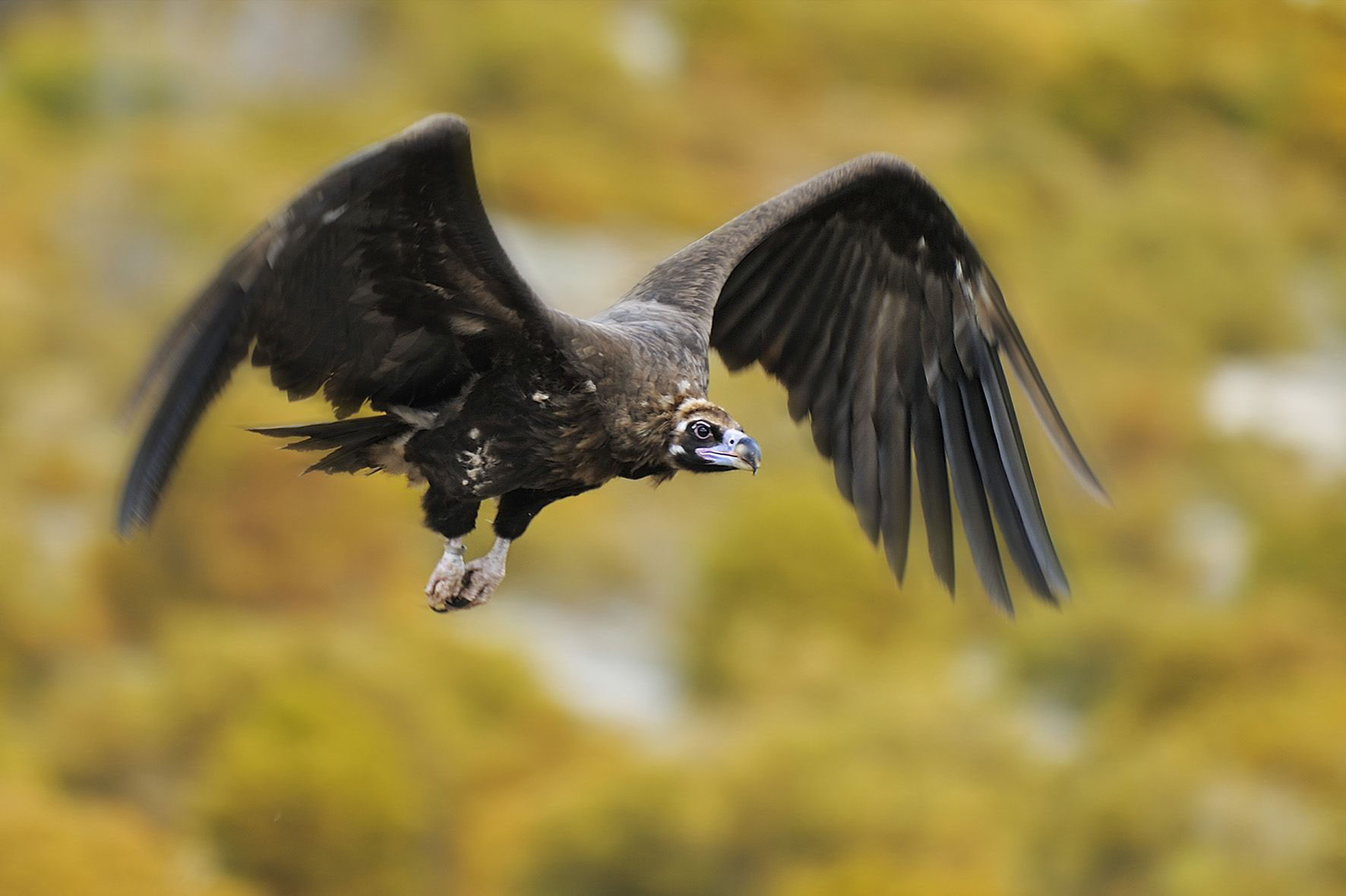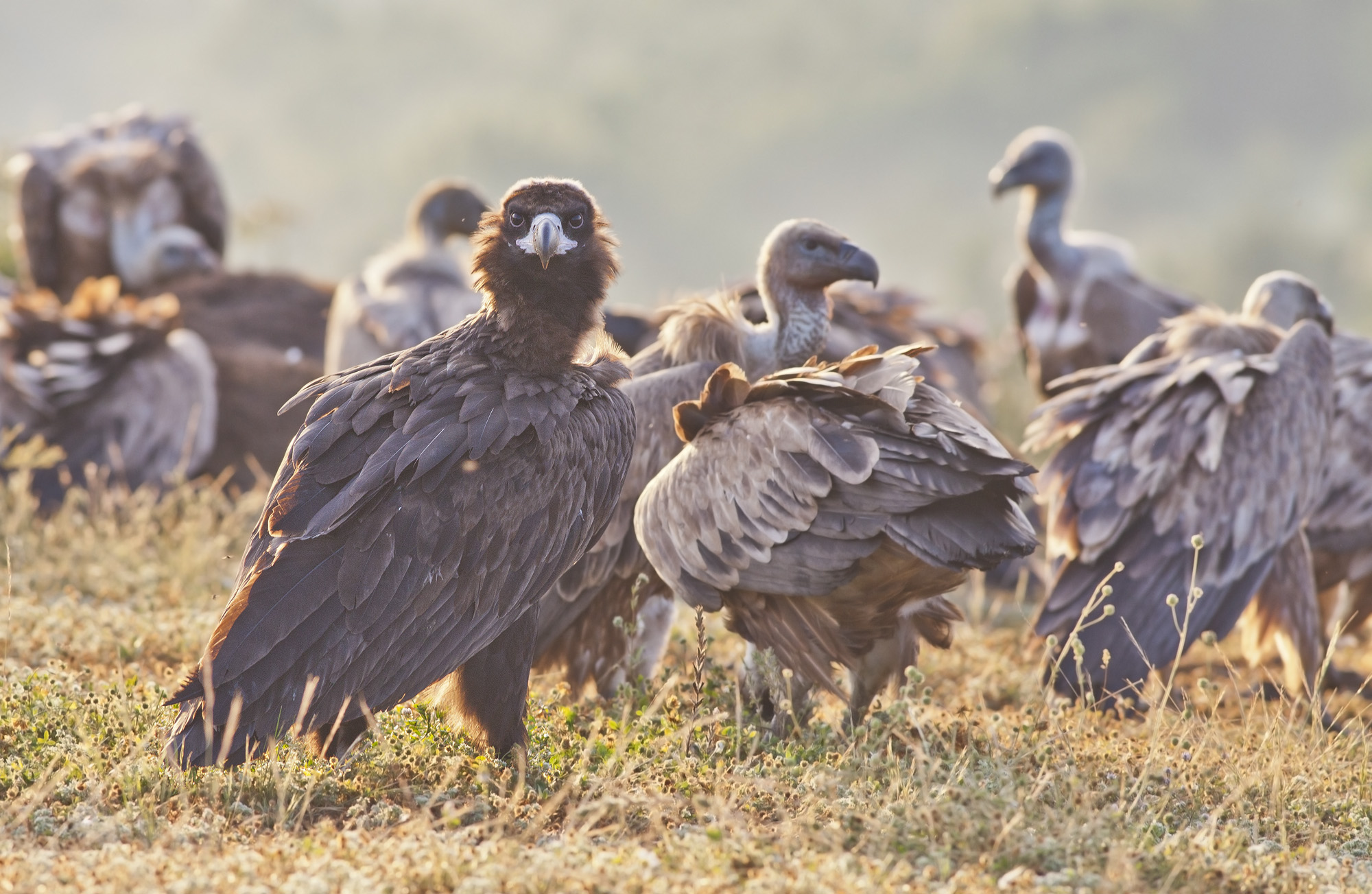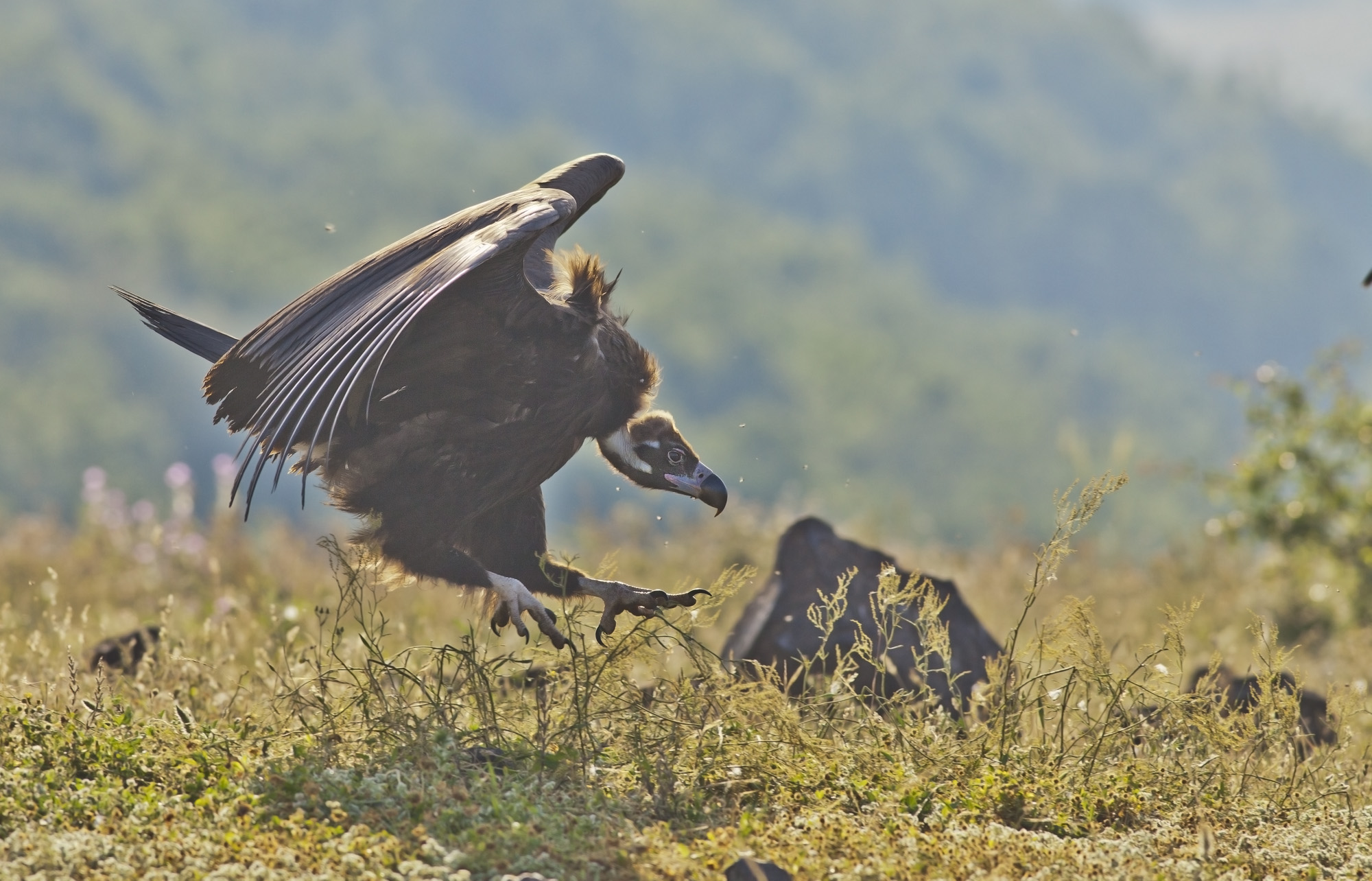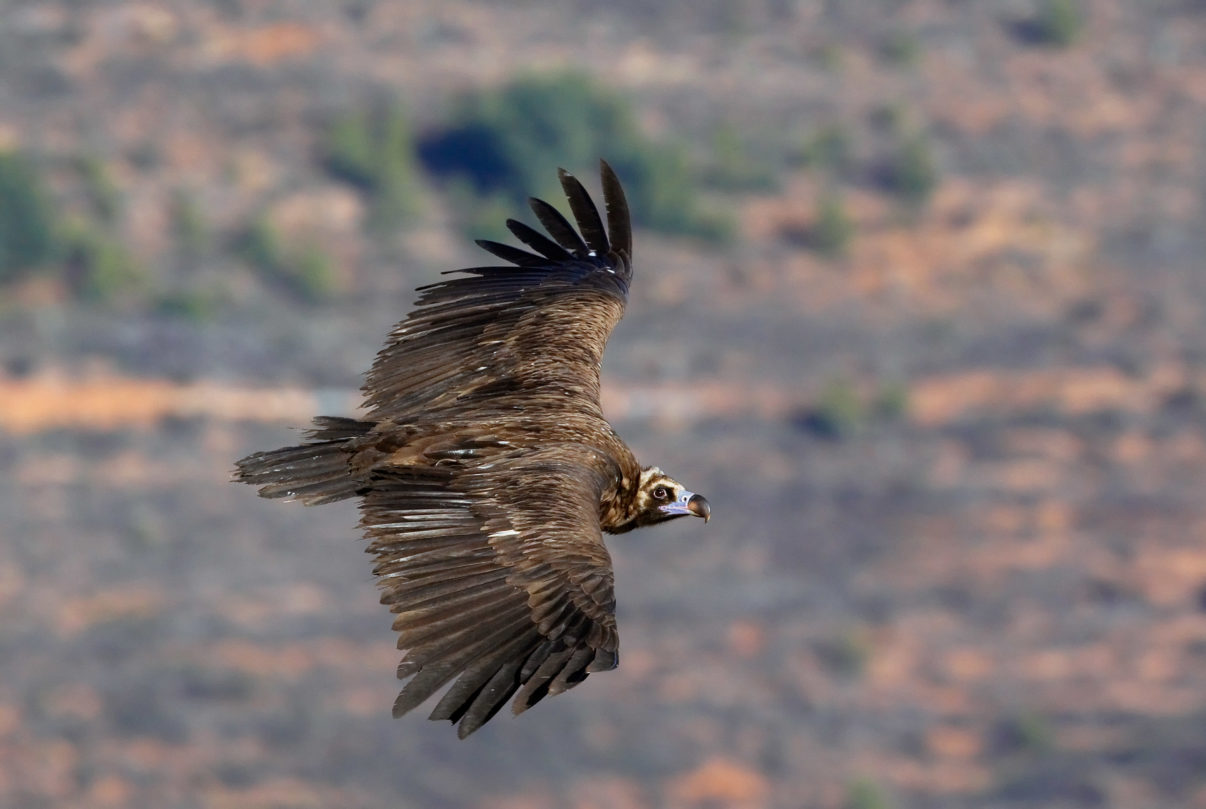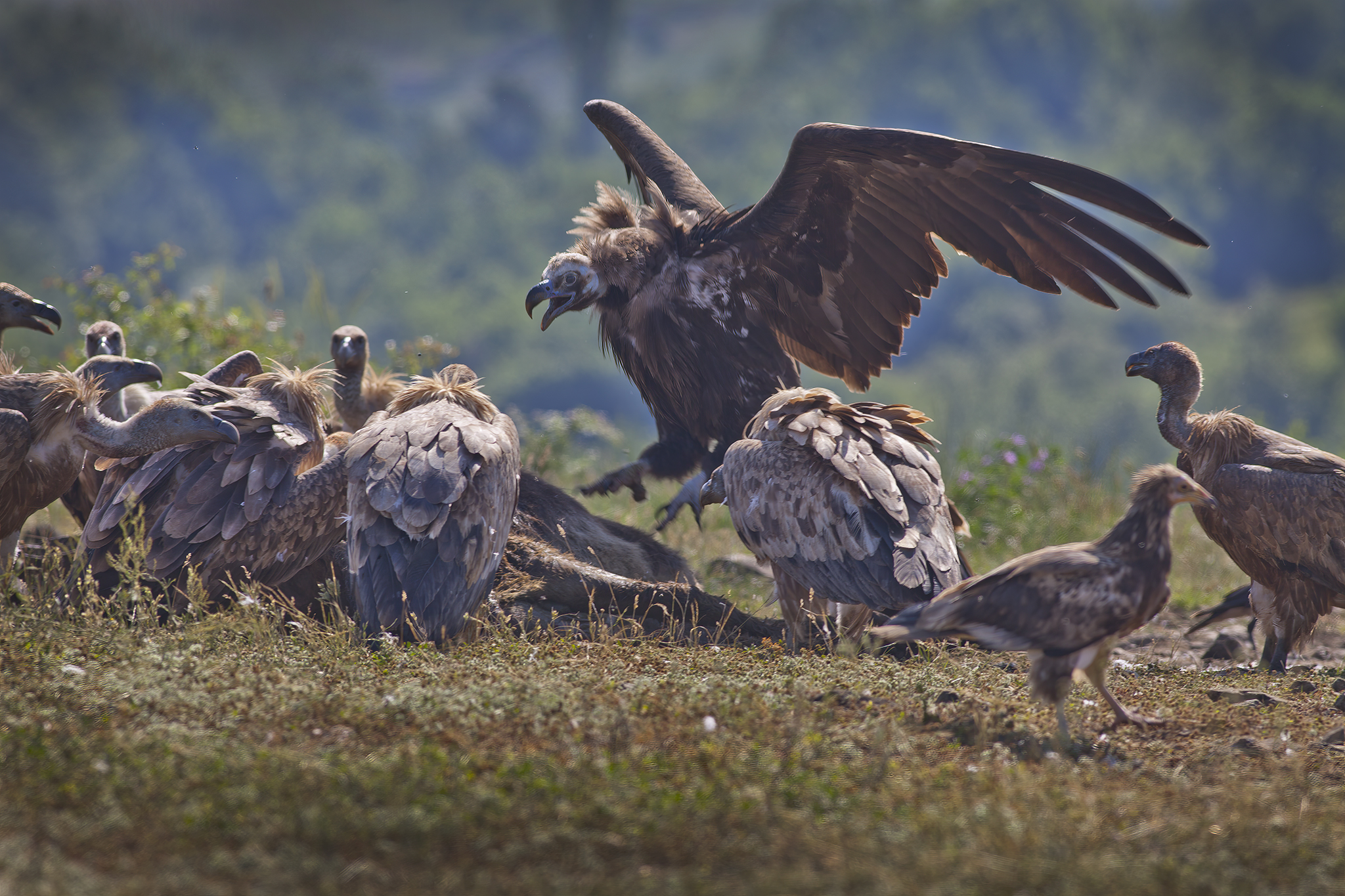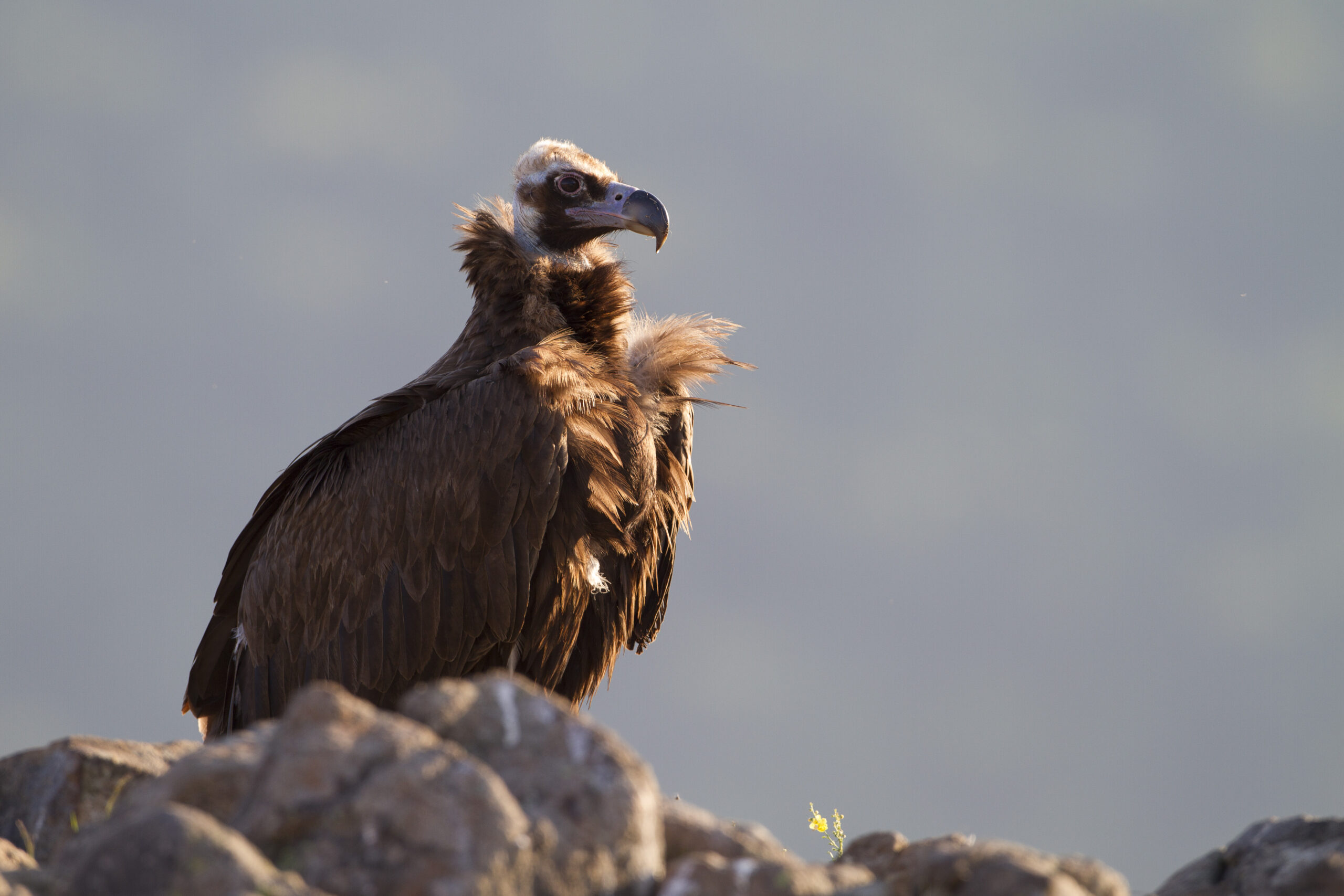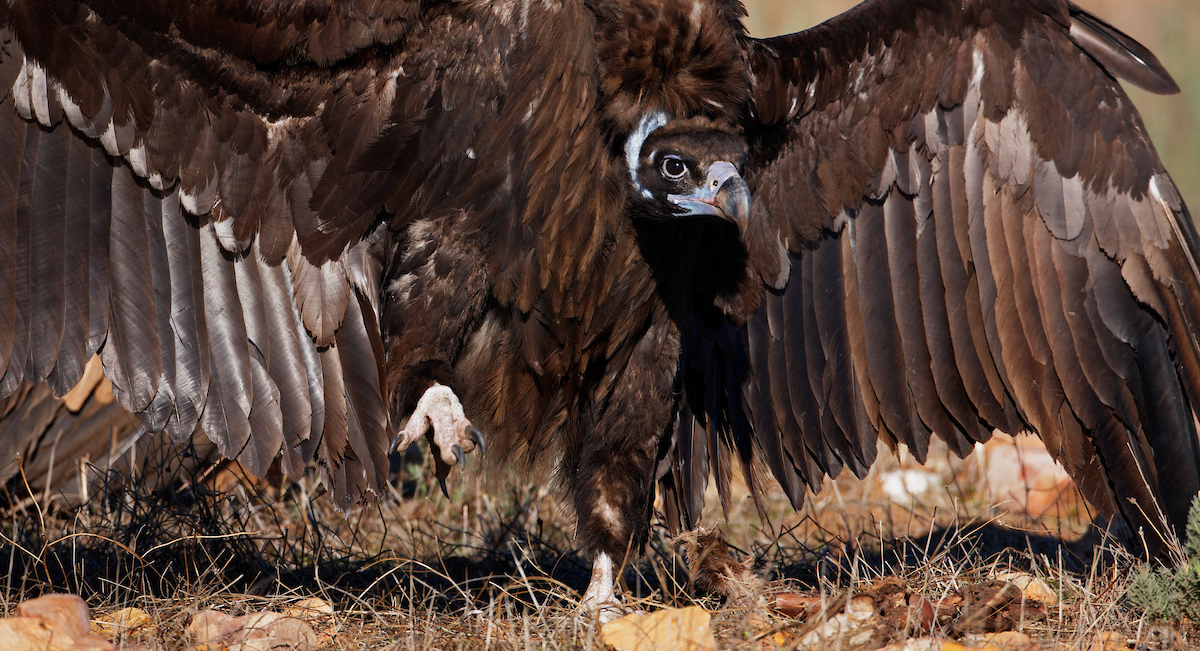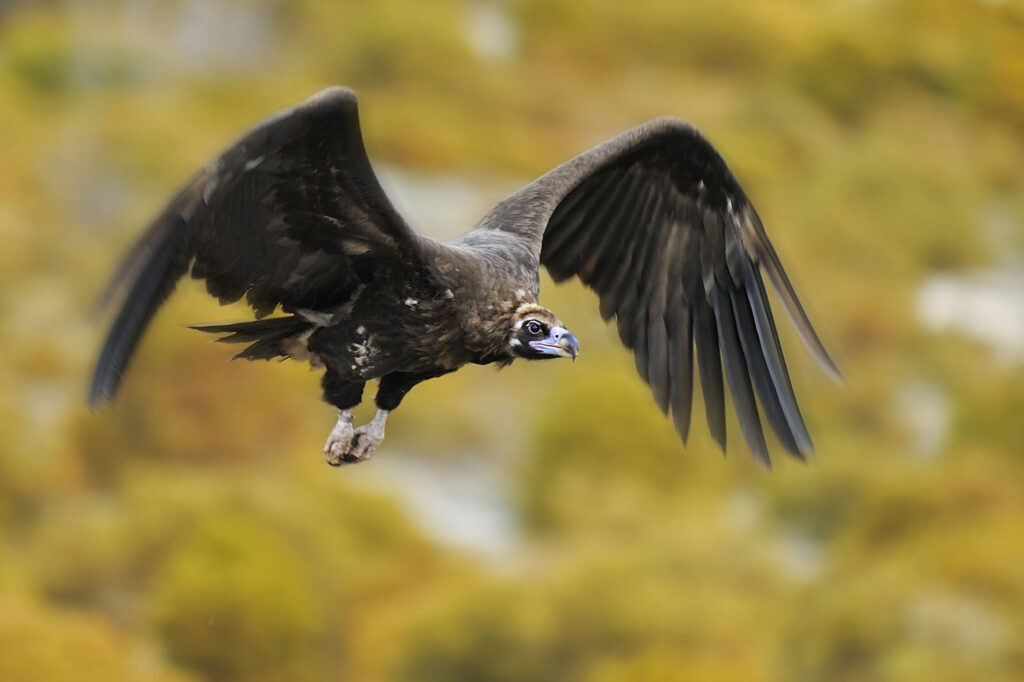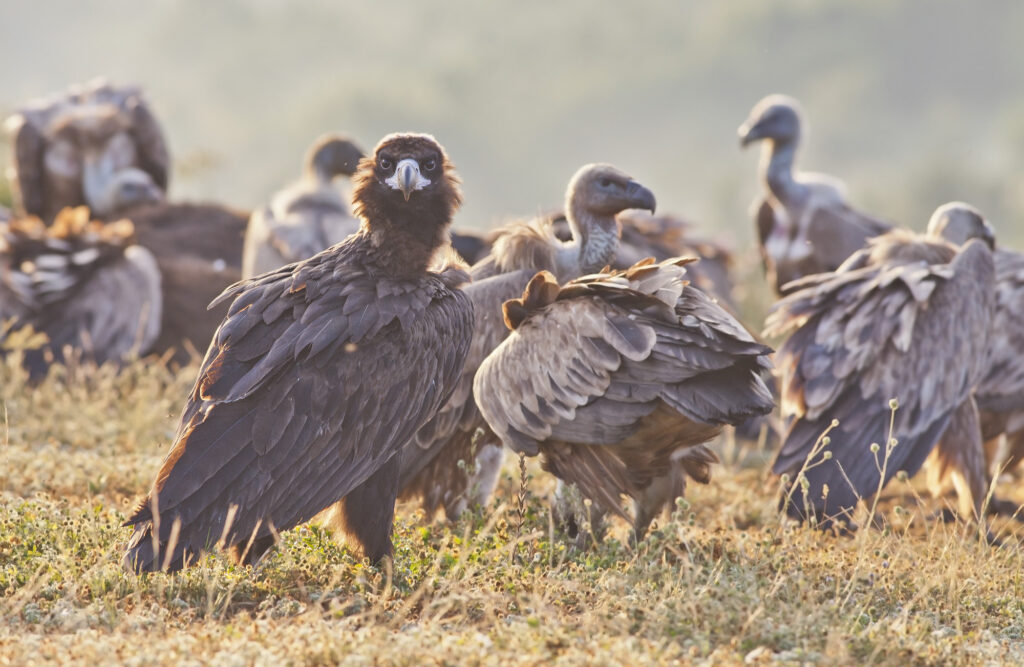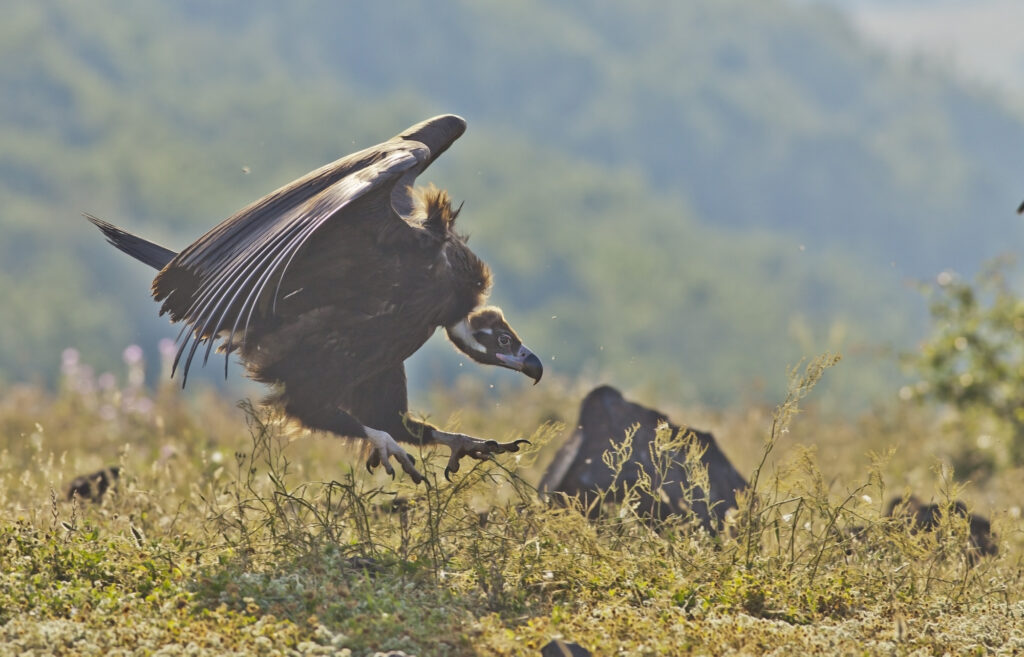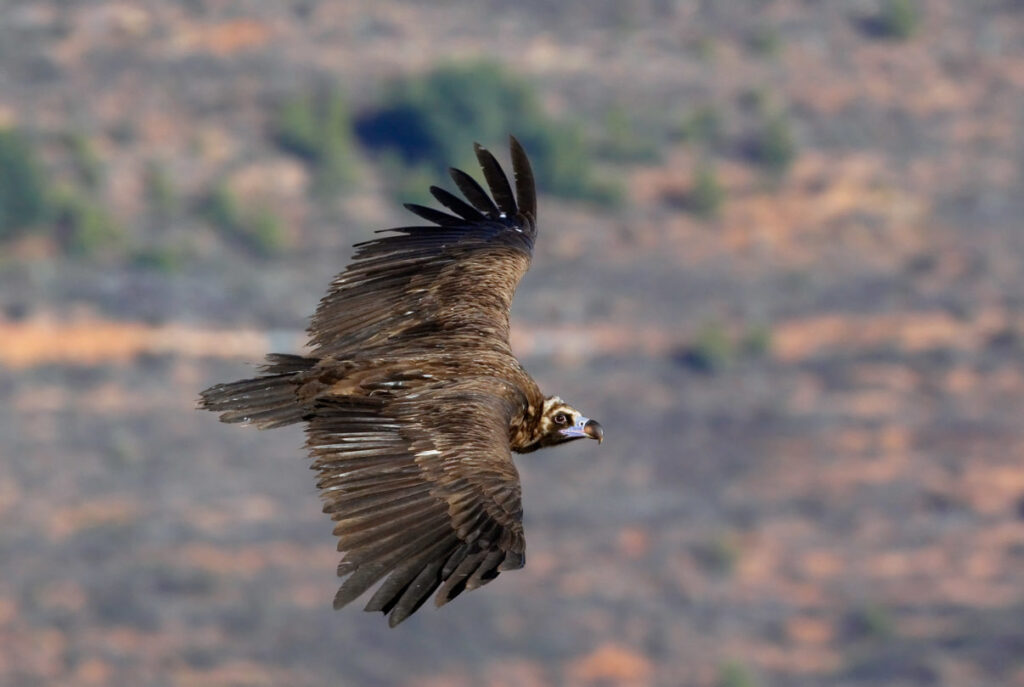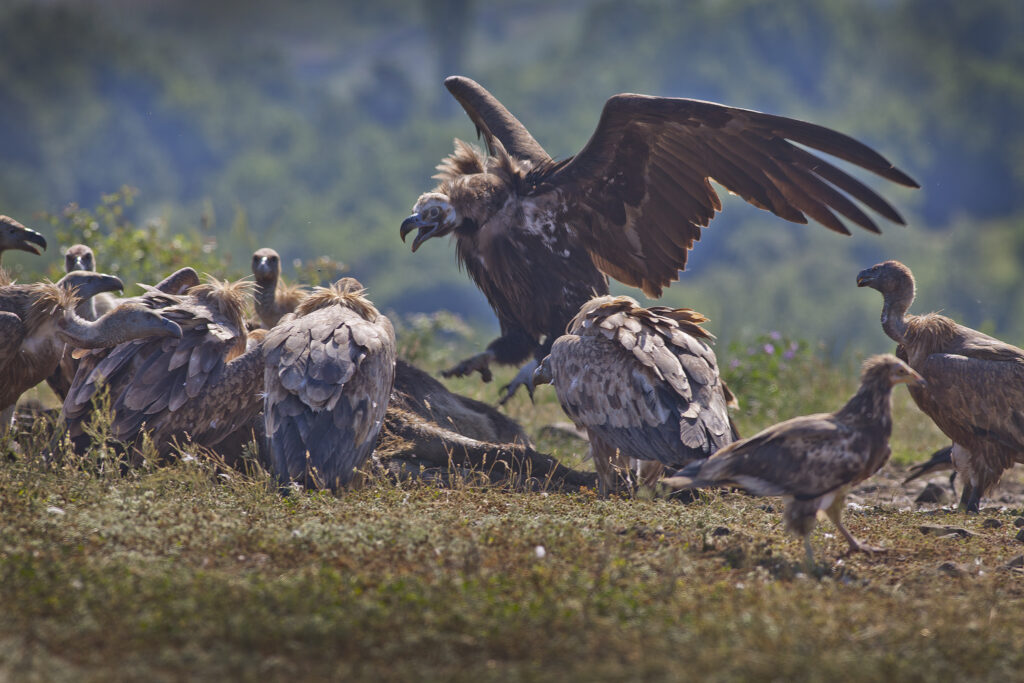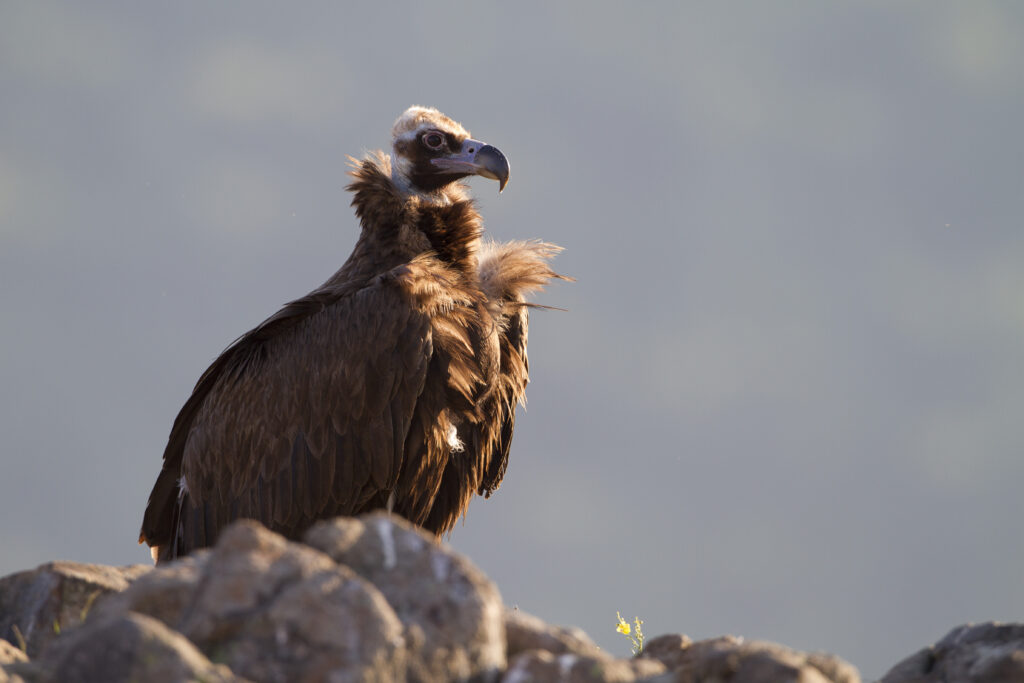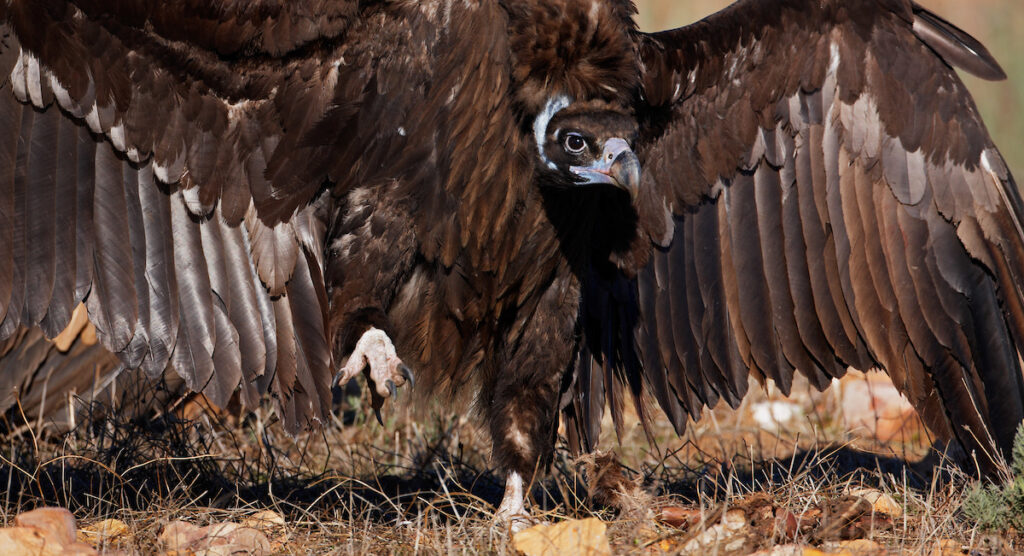Black vulture
The only colony of the black vulture on the Balkans is located in the National Park of the Dadia-Soufli-Lefkimi forest (Dadia NP) in the Greek part of the Rhodope Mountains, about 25 km from the border with Bulgaria. At the end of the 60’s the population in the Dadia NP was already low with only 4–5 pairs and 26 individuals.
Common and widespread in the past, the black vulture is nowadays considered as irregular breeder in Bulgaria. The last confirmed breeding occurred in 1993 in the territory of Studen Kladenets SPA and Eastern Rhodopes which are considered the last known breeding area of the species in Bulgaria.
Currently the Bulgarian part of the Eastern Rhodopes is an important part of black vultures home range breeding in Dadia, but also a possible site where immature birds may settle and eventually breed.
Biology and ecology
Black vulture is a resident species that forages over many kinds of open terrain including forest, open grasslands and bare mountains. Black vulture selects its nesting habitat in undisturbed areas, in mature vegetation patches. Nests are built in trees, often aggregated in loose colonies or nuclei. Its diet consists mainly of carrion from medium-sized or large mammal carcasses. Black vulture searches for food either in groups or individually, sometimes joining the Griffon vulture groups.
It lays its eggs during the December-January period depending on the climate peculiarities of the season. The young birds are hatched in February or March and are not leaving the nest untill the end of July or August. The nests form a loose colonies. In Dadia Forest, in the Greek part of the Easthern Rhodopes, the Black vulture lays its unique egg during mid-January – mid March period depending on the climate peculiarities of the year. The young birds are hatched in end April-beginning of May period and are not leaving the nest until the mid – end August. The Black vultures build their nests on very mature pine-trees located on extremely steep slopes or gullies.
Usually there is a rock or big tree to it used for a close scrutiny of the whole region.The young birds stay with their parents and live in families until they reach maturity. Occasionally they do far-reached wandering migrations and reach maturity on their sixth year.
